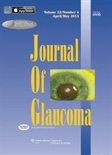
JOURNAL OF GLAUCOMA
Scope & Guideline
Exploring the forefront of glaucoma research and clinical practice.
Introduction
Aims and Scopes
- Clinical Management and Surgical Techniques:
Research related to innovative surgical techniques and clinical management strategies for various types of glaucoma, including advanced and pediatric glaucoma. - Diagnostic Methods and Technologies:
Studies exploring the efficacy of various diagnostic methods, including optical coherence tomography, tonometry, and machine learning applications in glaucoma detection and monitoring. - Epidemiology and Risk Factors:
Investigations into the epidemiology of glaucoma, including prevalence studies, risk factors, and health disparities affecting different populations. - Pharmacological Treatments and Therapies:
Research on the efficacy and safety of current pharmacological treatments for glaucoma, as well as novel therapeutic approaches and drug delivery systems. - Vision Function and Quality of Life:
Studies assessing the impact of glaucoma on vision-related quality of life, including psychological factors and patient adherence to treatment. - Innovations in Screening and Telemedicine:
Research on new screening methodologies and the use of telemedicine in glaucoma detection and management, particularly in underserved populations.
Trending and Emerging
- Artificial Intelligence and Machine Learning:
There is an increasing focus on the application of artificial intelligence and machine learning in glaucoma diagnosis and management, showing potential for improving detection and treatment outcomes. - Minimally Invasive Glaucoma Surgery (MIGS):
Research on minimally invasive surgical techniques is gaining momentum, reflecting a shift towards less traumatic options for patients with glaucoma. - Telemedicine and Remote Monitoring:
Emerging studies highlight the importance of telemedicine and remote monitoring, particularly in response to the COVID-19 pandemic, to enhance access to care for glaucoma patients. - Patient-Centered Outcomes:
An increasing number of studies are focusing on patient-reported outcomes and quality of life measures, emphasizing the need for patient-centered approaches in glaucoma management. - Genetic and Molecular Research:
There is growing interest in the genetic underpinnings of glaucoma, with studies exploring genetic risk factors and their implications for personalized treatment strategies. - Integration of Digital Health Technologies:
Research is trending towards the integration of digital health technologies, such as mobile health applications, to improve patient engagement and adherence to treatment.
Declining or Waning
- Traditional Intraocular Pressure Measurement Techniques:
There has been a noticeable decline in studies focusing solely on traditional intraocular pressure measurement techniques, as newer technologies and methodologies gain prominence. - Surgical Techniques for Established Glaucoma:
Research focusing on older surgical techniques without innovation has decreased, as there is a growing emphasis on novel approaches and minimally invasive procedures. - Basic Science Studies without Clinical Application:
The journal has seen a decline in basic science studies that do not have direct clinical implications or applications, as the focus shifts towards translational research. - Single-Center Studies:
There is a trend away from single-center studies towards multi-center collaborations and larger population-based studies, enhancing the generalizability of findings.
Similar Journals
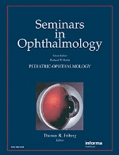
Seminars in Ophthalmology
Elevating Standards in Eye Health ResearchSeminars in Ophthalmology is a prestigious journal published by Taylor & Francis Inc, dedicated to advancing knowledge in the field of ophthalmology and related medical areas. Established in 1986, this journal has consistently provided a platform for high-quality research and insights, supporting the community with its impactful publications. With an impressive ranking of #55 out of 137 in the Ophthalmology category, the journal currently holds a Q2 quartile in both ophthalmology and miscellaneous medicine as of 2023, reflecting its significant contribution to the discipline. Researchers and practitioners can access a wealth of information covering a comprehensive range of topics, bolstering both clinical practice and academic inquiry. While not an open-access publication, Seminars in Ophthalmology remains a crucial resource for advancing ophthalmic research, fostering collaboration, and disseminating valuable findings in a rapidly evolving specialty.

Journal of Ophthalmology
Exploring the Frontiers of Eye Care ScienceThe Journal of Ophthalmology, published by HINDAWI LTD, is an esteemed open-access journal that has been disseminating significant research in the field of ophthalmology since 2009. With an ISSN of 2090-004X and an E-ISSN of 2090-0058, this journal facilitates global access to cutting-edge studies, making it an essential resource for researchers, clinicians, and students alike. Ranked in the Q2 category of ophthalmology for 2023, the journal holds a commendable position with a Scopus rank of #37 out of 137 in its field, placing it in the 73rd percentile. The journal encompasses a variety of topics such as clinical advancements, surgical techniques, and innovative technologies in eye care, aiming to advance scientific knowledge and clinical practice in ophthalmology. By providing a platform for both novel research and comprehensive reviews, the Journal of Ophthalmology is instrumental in fostering collaboration and scholarly communication within the global eye health community, and its commitment to open access ensures that impactful research reaches a wide audience without barriers.
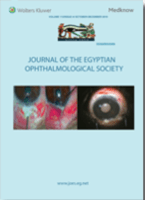
Journal of the Egyptian Ophthalmological Society
Fostering global knowledge exchange in ophthalmology.Journal of the Egyptian Ophthalmological Society is a premier academic journal dedicated to advancing the field of ophthalmology through high-quality peer-reviewed research. Published by Wolters Kluwer Medknow Publications, this journal plays a critical role in disseminating vital findings and innovations in eye care, fostering knowledge exchange among researchers, practitioners, and educators worldwide. Since its transformation to Open Access in 2014, it has significantly enhanced the accessibility of eye health information, thereby broadening its impact on the global scientific community. With an ISSN of 2090-0686 and an E-ISSN of 2314-6648, the journal aims to tackle contemporary issues in ophthalmology, including clinical practices, public health, and technological advancements in eye care. The journal's commitment to excellence ensures that it remains a vital resource for those looking to contribute meaningfully to this dynamic and crucial field.

Journal of Ophthalmic & Vision Research
Transforming Knowledge into Visionary SolutionsThe Journal of Ophthalmic & Vision Research, published by KNOWLEDGE E, stands as a crucial platform for disseminating high-quality research in the field of ophthalmology. With an ISSN of 2008-2010 and an E-ISSN of 2008-322X, this journal fosters open access to valuable insights since 2010, enhancing visibility and reach for researchers globally. Based in Dubai, UAE, it has established a reputation for excellence, reflected in its Q2 ranking in Ophthalmology for 2023 and its position among the top 65th percentile in Scopus. Covering a broad spectrum of topics within ophthalmic science, the journal serves as a vital resource for professionals, researchers, and students by presenting original research, reviews, and case studies that drive innovation and collaboration within the community. As the journal continues to contribute to advancements in eye care and vision sciences, it invites scholars to explore, engage, and publish within its pages, thus enriching the global discourse on ophthalmic health.
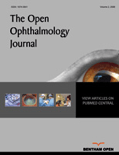
Open Ophthalmology Journal
Illuminating the path to better vision through research.The Open Ophthalmology Journal, published by Bentham Science Publishers Ltd, is a vital resource in the field of ophthalmology, dedicated to advancing knowledge through open-access research. With an ISSN of 1874-3641, it offers a platform for the dissemination of innovative studies from 2011 to 2024, focusing on the latest developments in eye care and vision science. Despite being categorized in the lower quartile (Q4) according to the 2023 rankings, and holding a position in the Scopus Ricks at 113 out of 137 in the ophthalmology domain, the journal serves as a valuable outlet for emerging scholars and seasoned researchers alike to share their findings. The journal's commitment to accessibility ensures that its content is available to a broad audience, promoting collaboration and knowledge exchange. Located in the Netherlands, The Open Ophthalmology Journal aspires to become a cornerstone for those passionate about understanding and improving ocular health through rigorous scientific inquiry.

BMC Ophthalmology
Advancing Vision Science for a Brighter TomorrowBMC Ophthalmology is a premier open access journal dedicated to advancing the field of ophthalmology through the publication of high-quality, peer-reviewed research. Published by BMC in the United Kingdom, this journal has been a vital resource since its inception in 2001 and continuously contributes to the global dialogue in vision science. With an impact factor reflecting its growing influence, BMC Ophthalmology is ranked among the top quartiles (Q2) in both general medicine and ophthalmology, emphasizing its significance in medical research. The journal encourages submissions that explore innovative diagnostics, treatment approaches, and understandings of various ocular diseases, thereby appealing to researchers, clinicians, and students alike. As an open access platform, it ensures that cutting-edge research is not only published but also readily accessible to a worldwide audience, promoting further study and collaboration in this essential area of medicine.

Clinical Ophthalmology
Exploring the frontiers of clinical ophthalmology.Clinical Ophthalmology is a leading Open Access journal published by Dove Medical Press Ltd, dedicated to advancing the field of ophthalmology through peer-reviewed research and clinical studies. With a strong impact factor and ranked in the Q1 category of ophthalmology as of 2023, this journal is recognized for its significant contribution to the body of knowledge pertaining to eye health, vision science, and clinical practice. Its Scopus ranking places it within the top 30% of journals in the field, reflecting its influence and relevance in both academic and clinical landscapes. Since its inception in 2007, Clinical Ophthalmology has established a reputation for fostering high-quality research, providing a platform for researchers, professionals, and students to share their findings and insights. The journal's commitment to open access ensures that groundbreaking research is freely available to the global community, supporting innovation and collaboration in the pursuit of better patient outcomes worldwide. For those engaged in ophthalmological research and clinical practice, Clinical Ophthalmology serves as an invaluable resource and a hub for the latest developments in the field.
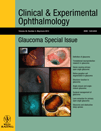
CLINICAL AND EXPERIMENTAL OPHTHALMOLOGY
Fostering Global Dialogue in Eye Care ScienceCLINICAL AND EXPERIMENTAL OPHTHALMOLOGY is a leading peer-reviewed journal published by Wiley, renowned for its commitment to advancing the field of ophthalmology. With an impressive impact factor reflecting its high-quality research contributions, this journal is ranked in the Q1 category both in Medicine (miscellaneous) and Ophthalmology, signifying its crucial role in shaping contemporary ophthalmic research. It boasts a remarkable position in the Scopus Ranks, standing at Rank #13 out of 137 in the field of Medicine and Ophthalmology, placing it within the 90th percentile among its peers. Having been in circulation since 1979, this journal encompasses a broad scope of topics that aim to disseminate groundbreaking findings and stimulate dialogue among researchers, clinicians, and students alike. It is easily accessible to a global audience, embodying the principles of open access, making valuable research available to all. For anyone seeking to stay at the forefront of ophthalmology, CLINICAL AND EXPERIMENTAL OPHTHALMOLOGY is an indispensable resource that fosters knowledge and innovation in the ever-evolving landscape of eye care.

Ophthalmology Glaucoma
Driving Excellence in Ophthalmology and Patient OutcomesOphthalmology Glaucoma is a premier academic journal dedicated to advancing the understanding and management of glaucoma, a leading cause of irreversible blindness worldwide. Published by Elsevier, this journal covers a broad spectrum of topics within the field of ophthalmology, providing a platform for groundbreaking research and clinical insights. With an impressive impact factor that places it in the Q1 category of ophthalmology journals, and a commendable Scopus ranking of 29 out of 137, Ophthalmology Glaucoma is recognized for its rigorous peer-review process and high-quality publications. Since its inception in 2018, the journal has focused on disseminating innovative findings and treatment modalities to enhance patient care and outcomes. Researchers, clinicians, and students are encouraged to explore the Open Access options available, promoting wider accessibility to critical scientific knowledge. By staying at the forefront of ophthalmic research, Ophthalmology Glaucoma plays an essential role in shaping practices and policies that improve eye health globally.

Journal of VitreoRetinal Diseases
Connecting researchers to elevate retinal disease understanding.Journal of VitreoRetinal Diseases is a leading publication in the field of ophthalmology, specifically focusing on the complex landscape of vitreo-retinal conditions. Released by SAGE Publications Inc, this journal plays a crucial role in advancing the understanding and treatment of retinal diseases through high-quality, peer-reviewed research. With an ISSN of 2474-1264 and an E-ISSN of 2474-1272, the journal has gained recognition since its inception in 2017, currently ranking in the Q3 category of ophthalmology based on its Scopus metrics. Positioned within the 31st percentile among its peers, the journal provides a platform for the dissemination of innovative findings and clinical practices. Although it operates under a traditional access model, the significance of its contributions is profound, making it an essential resource for researchers, healthcare professionals, and students dedicated to improving patient outcomes in retinal health.